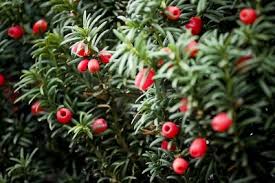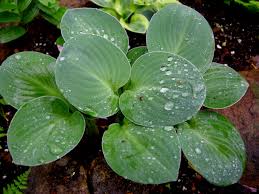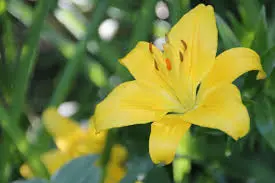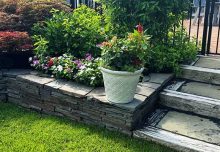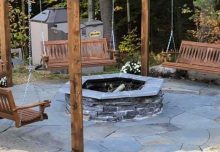Now that summer is here and your itchy gardener fingers are able to get their exercise, it’s time to make sure you have a garden that is Vermont friendly to you and your furry house guests.
We’re all beginning to enjoy the oodles of blooming beauties accenting our prized emerald landscapes.
While there are almost limitless options for your planting beds and borders, some plants you should flat-out avoid:
- Invasive plants in Vermont State that take over like sinister scoundrels, choking out beneficial plants the ecosystem needs.
- Plants that attract ravenous, garden-clearing deer and cute, but dastardly munching bunnies.
- And plants that look pretty, but are toxic to your furry pets.
Yes, you might spy a couple of your favorites here. But trust us — there are plenty of alternatives to these garden bad guys. We’ll even give you some ideas.
First, A Better Understanding Of Invasive Plants
Invasive plants spread aggressively outside their normal range, multiplying like crazy because their new environment lacks the insects, diseases, hungry animals and competition from other plants that keep them in check in their native habitat.
They may look lovely and innocent in your backyard, but invasive plants can pose a serious environmental threat. As they spread, these garden bad guys crowd out native plant communities, which harms the rest of the ecosystem.
When we say garden bad guys, we mean actual outlaws. New regulations went into effect in March 2015 in across the nation that ban the sale, purchase and transportation of a long list of invasive plants that have been causing a ruckus throughout the nation’s landscapes for decades.
Brace yourself. The list of 143 invasive plants — you can see the complete list — might include some of your favorites, including Norway maple, burning bush, Dame’s Rocket, purple loosestrife, garlic mustard, and several types of honeysuckle.
A popular vine on the list is: Asiatic or Oriental bittersweet. It probably came here innocently enough, when backyard gardeners decided they’d look pretty on their trellises. Now you can see this invader smothering trees along the highway.


 Invasive Plants in Vermont — The Big No-Nos
Invasive Plants in Vermont — The Big No-Nos
One captivating plant you should definitely avoid is purple loosestrife. It’s lovely, with tall purple spires. Look away.
Brought to New England as an ornamental plant in the 1800s, purple loosestrife has tiny seeds that spread like crazy in wind or water.
Massive drifts of the purple flower grow to thousands of acres in size, crowding out crucial open-water habitat for butterflies and amphibians.
What to plant instead? Blazing star has spiked, pink-purple flowers and offers nectar for many native species of butterflies and other insects. These plants make wonderful highlights lining any walkway or patio.
Instead of invasive Oriental bittersweet, plant American bittersweet. It’s a native species that looks very similar, with pretty orange berries, but doesn’t grow out of control.
Love Japanese barberry? Good substitutes for this pretty, but invasive shrub are Weigela ‘Midnight Wine,’ with its dark burgundy foliage —and the low-growing cotoneaster.


 Plants That Attract Munching Wild Critters
Plants That Attract Munching Wild Critters
Why is it that your favorite garden lovelies are also the plants that summon hungry deer to an all-you-can-eat buffet? Like you, deer apparently have good taste. Actually, they’ll eat just about anything. Here are a few of their favorites to avoid, and the deer-resistant plants you can grow instead:
Hostas
We know, we know. Everybody loves hostas, those hardy, beautiful lovers of shade. But deer devour them, right down to the nub.
What to plant instead?
Brunnera. This is a shade plant you might not have heard of, but some varieties, like ‘Jack Frost,’ boast stunning variegated foliage that fill in great for hosta. It offers clusters of pretty blue flowers in the spring.
Another good hosta alternative is lungwort. It sounds gross, but trust us — it’s a garden stunner, with silver speckled leaves that brighten up shady spots. It’s covered in coarse hairs, so deer tend to leave it alone.
Lilies
Deer love lilies like toddlers love lollipops. What to plant instead?
Bee Balm is a showy perennial with bright flowers that attract hummingbirds and butterflies, but deer and rabbits say, “meh.”
Also try Golden Marguerite, with cheerful gold daisy-like flowers. It has fuzzy leaves that deer leave alone
Yews
Munch, munch, munch — so long, pretty yews. Try these deer-resistant shrubs instead: spirea, potentilla, American holly.
Holly offers the same verdant green you get from yews. Spirea boasts delicate foliage and cascading branches of white or pink spring flowers, while potentilla brightens up your landscape with pretty buttercup-like flowers as early as June and as late October.
When Deer Say, “Yuck.”
In general, deer pass up plants with fuzzy or hairy foliage. Think lamb’s ear and lady’s mantle.
They also instinctively avoid plants that will upset their stomachs, including bleeding heart, poppies, daffodils and ferns.
Deer also crinkle their noses at heavily fragranced foliage. So herbs are your garden pals. Most herbs are both beautiful and deer-resistant, including sage, thyme, rosemary, oregano, lavender and others.
Ornamental grasses? Bingo. Deer find grasses tough to digest and don’t like their sharp edges.
These Plants May Be Harmful To Pets
Lots of common garden plants can be toxic to dogs and cats. Here are a few to talk with your landscaper about — and possibly avoid:
- azalea
- begonia
- chrysanthemum
- cyclamen
- daffodil
- gladiola
- hosta
- lilies
- morning glory
- tulips
Plant these colorful and safe annuals instead:
- petunias
- cosmos
- snapdragons
- zinnias
Pet-safe perennials include:
- bee balm
- phlox
- roses
- coneflowers
Download a list of all potentially toxic plants for pets.
Livingston Farm Knows The Right Plants
Our experts at Livingston Farm Landscape love finding the perfect annuals, perennials, shrubs and trees for your landscape, while avoiding invasive outlaws, critter salad bars and plants that could harm Bella or Max.
We’ve been accenting landscapes for more than 15 years, so we have a vast knowledge of plants, stones — and a number of tricks up our sleeve when it comes to finding great substitutes for plants that can harm the environment or your family pets.
At Livingston Farm, we’re about creating a better way of life. That means caring about the ecosystem, as well as beautifying it. If you have any questions, please contact us by phone, email, or feel free to stop by our Bristol, Vermont location!




